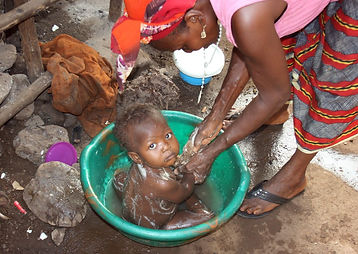
Effects of the Water Crisis
The lack of access to a clean water source has far reaching effects on human health, poverty, and inequality. Each year, around 1.2 million people die each year from unsafe water sources [2]. The water crisis also disproportionately affects women and children, who are largely responsible for walking long distances to gather water. The water crisis and poverty are inextricably linked in a self-reinforcing feedback loop.
01
Disease


Unsafe water harbors a variety of disease-causing bacteria and parasites. Many of these diseases, such as cholera and typhoid fever, are particularly deadly in young children, as they cause severe diarrhea which can lead to critical dehydration and eventually death [1]. Others can cause blindness (trachoma), tissue death (buruli ulcers), and a variety of gastrointestinal problems and beyond (parasitic worms) [1].
According to the CDC, clean water, proper sanitation, and hygiene have the potential to prevent 9% or more of the global disease burden [1]. Since these diseases primarily affect poor communities in the tropics rather than developed countries, many are left under-treated, hence the name Neglected Tropical Diseases (NTDs). However, efforts from global humanitarian foundations have had success eradicating some NTDs, such as the Carter Center’s efforts to fight Guinea Worm Disease [6].
02
Poverty and Inequality
Poverty is one of the most devastating consequences of poor access to clean water. When communities do not have easy access to clean water and sanitation facilities, workers and business owners are forced to take more time out of their day to find water and a place to go to the bathroom [7]. Additionally, the prevalence of water-borne and sanitation-related disease can devastate worker productivity and result in a huge loss of income for many families.
Women and children are disproportionately harmed by the water crisis. Studies have estimated that women and girls spend an average of 6 hours and walk an average of 3.7 miles per day fetching water [5]. This causes a variety of health problems related to exertion, keeps girls from attending school, and contributes to gender inequality. A lack of sanitation facilities also causes girls to miss school at high rates during menstruation [1]. Therefore, improving access to clean water means greater equality for women and better economic conditions for all.

